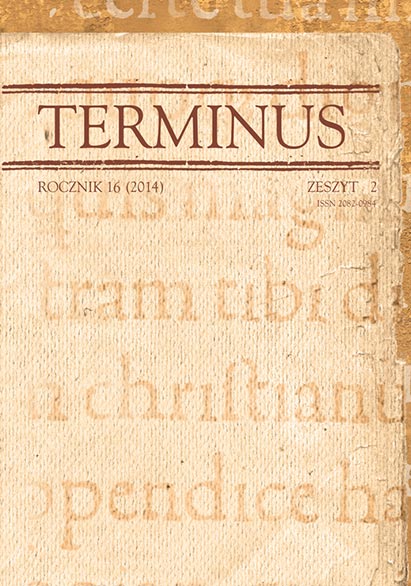Wokół głównych kierunków studiów nad ukraińskimi retorykami barokowymi
On the main trends in studies of Ukrainian baroque rhetoric
Author(s): Olga CyganokSubject(s): Language and Literature Studies, Studies of Literature, Ukrainian Literature
Published by: Wydawnictwo Uniwersytetu Jagiellońskiego
Keywords: History of rhetoric; Early modern rhetoric; Kiev-Mohyla Academy; Teofan Prokopovych
Summary/Abstract: The author illustrates the state of the art about the theory of rhetoric in Ukraine in the 17th and 18th centuries. She indicates the main results of studies of the ancient Ukrainian rhetoric manuals: academic descriptions (by Mykola Petrov and Volodymyr Lytvynov), a publication of the Rhetoric of Teofan Prokopovych (by Renate Lachmann), some Ukrainian translations (by Myroslav Rohovych, Vitalii Masluk etc.) and main interpretations (by Renate Lachmann, Dmytro Nalyvaiko and Marek Skwara). The author makes a survey of the contributions written by previous scholars and indicates why their approach was only partial. To some extent she puts this down to ideological reasons. The author indicates that the texts of rhetoric and poetic treatises were often confused or dealt with in the same course, whereas the latter could be shorter or longer. Individual preferences and occasional reasons could induce the teacher/writer of rhetoric or poetics to look for various solutions and to adapt the course to the needs of the students, school or circumstances. Modern research into baroque Ukrainian rhetoric courses is critically analysed based on textual study of the sources. The necessity for a re-edition of the following fundamental academic works is substantiated: the description of eloquence courses in Kiev-Mohyla Academy by Vladimir Lytvynov and the Ukrainian translation of a rhetoric treatise by Feofan Prokopovych (1706). The following key directions for research have been specified: 1) modern description of treatises stored in Ukrainian libraries, based on descriptions by Nikolay Petrov and Vladimir Lytvynov, with corrections to detected inaccuracies and additions; 2) publication of the texts of selected rhetoric courses at a modern academic level (introductory research article, photo-copy of the original, detailed comments); 3) a Ukrainian translation; 4) monographic studies of (a search for classic and renaissance or baroque) Western sources and models of Ukrainian rhetoric, determination of style dominant etc.). The search for Jesuit rhetoric in Ukraine is a task that scholarship must initiate. The author indicates her future methods in her planned investigation. She intends to begin by choosing one important text that has not yet been properly investigated (for example, the Manuductio (1736)). The project of publishing all the texts with a modern translation is sensible. The first thing to do is to make texts accessible to a large number of scholars. The conclusion is drawn that the 1980s and early 1990s were the most fruitful period for studies of ancient Ukrainian rhetoric courses.
Journal: TERMINUS
- Issue Year: 16/2014
- Issue No: 3 (32)
- Page Range: 285-303
- Page Count: 19
- Language: Polish

